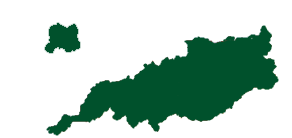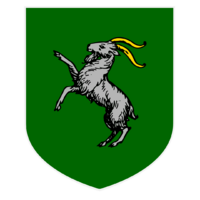Swinas
Federal Republic of Swinas Parnaas Tulapayttap bet Swiinas | |
|---|---|
 | |
| Capital | Tuppelt |
| National Language | Swiina, Common, German |
| Ethnic groups |
|
| Demonym(s) | Swiina |
| Government | Federal Republic |
• First Consul | Eduard Hoffman |
• Second Consul | Lorenzo Ricci |
| Area | |
• Total | 985,095 km2 (380,347 sq mi) |
| Population | |
• 2020 census | 42,299,153 |
| GDP (nominal) | estimate |
• Total | 448,984,350,000 |
| Currency | Swiina Diiydut, Swiina Diiyduttip (SD, SDP) |
| Driving side | right |
| Calling code | +59 |
The Federal Republic of Swinas, known to the native Swiina speakers as "Tild Parnaas Tulapayttap bet Swiinas" is a nation with a rich history and language, being born in what is now the Deserts of Swinas, before migrating to the more arable lands of the Eastern Swish Plains, where the capital of Tuppelt is located. Whilst the mainland speaks mostly Swiina, the island of Nordinsel is far different, being much more Germanic culturally and linguistically. The Federal Republic is led by the two Consuls of the Republic, along with the Provincial Governors of each Province. Nordinsel has special autonomy laws that allow it to govern itself more freely than other mainland provinces for several reasons. Though there is no official symbol of Swinas, the Swiina people are often associated with rams, with this being reflected both on the Coat of Arms and in their currency, as Diiydut is Swish for Ram. Swinas is entirely located in the continent of Hiraethia, spanning an area of 985,095 square kilometers.
The origins of the Swiina people are contained in the heart of the now Deserts of Swinas. Once improve travel technology was brought to them in 1000 BCE, the Swiina people migrated east to the more arable lands of the Plains, where the Capital City of Tuppelt is located. Following the great migration of the Swiina people, fine arts was being developed in Swiina Culture, as the resources readily available to the Swiina people changed significantly. One major example is pottery having a significantly reduced production as clay was harder to find in the Plains of Swinas, than it was in the Deserts of Swinas.
By 750 BCE, the first major Swiina Nation was founded in the Eastern Swish Plains. That nation would be the the Pwishga Authority. The Pwishga Authority would dominate the Swish Plains with their quick moving chariots and cavalry. In addition, the Pwishga Authority also made numerous technological advancements. By approximately 700 BCE, the Pwishga Authority ruled over the Swish Plains. The Pwishga Authority continued to innovate until 660 BCE when hordes from the Deserts of Swinas would swarm the Northern Towns of the Pwishga Authority, and with a lack of easy communication, would be reduced to a local power in the South-Eastern Plains of Swinas. These 'Desert Hordes' would be the remnants of Swiina Culture in the Deserts (which were quite a plenty) as well as those who sought to escape the rule of the Dwashpattak. The Pwishga Authority's conquest of the Swish Plains actually led to many minor migrations from major towns of the North and Central Plains of Swinas, where many continued to reside, allowing for Swiina culture to flourish in both the Desert and Plains, though minor differences could be noticed, such as dialect or cultural practices.
More to be added soon..
History
TBA
Government
The Government of Swinas will now be explained in full depth. The Government of Swinas is divided into 3 echelons, the first being the Consuls, the next being the Senate, and finally the Provinces. The consuls are the easiest to explain, and will be discussed first. The requirements to become a consul are that you must be at least 30 years old, you must have been a member of the senate for 5 years, and you must be born in Swinas or your parents were born in Swinas. The two consuls share the power to veto and approve legislation, but if the Senate counters the veto with a 75% majority then it is passed regardless. The two consuls must both sign legislation before it is passed. Then there is the Senate. The Modern Senate is comprised of 100 members, but this number has changed throughout history. To be a member of the Senate you must be 20 years old. A senator has one vote each, and a simple majority of 51/100 can pass a law. If both consuls veto a law, then it can be countered by a 75/100 majority, which will override the Consul Veto and force the law to be passed. The Senate has some limitations per what laws it can pass due to the constitution, mainly that it cannot impede upon the established Bill of Laws. Laws in the Bill from the beginning of the Federal Republic cannot be easily removed, but newer ones are easier to remove.
Lastly there is the provinces. Each province has a governor who can choose to follow or not follow certain legislation passed by the Senate. In addition, the Governor acts as the speaker of the Province, as there is also a Provincial Assembly in every province which has a member count proportional to it's population. These provincial assemblies can only pass laws which involve the province they are in, however. The consuls, senate, and provinces altogether make up the Modern Government of Swinas, which has been in place for 400 years and is still stable today.

